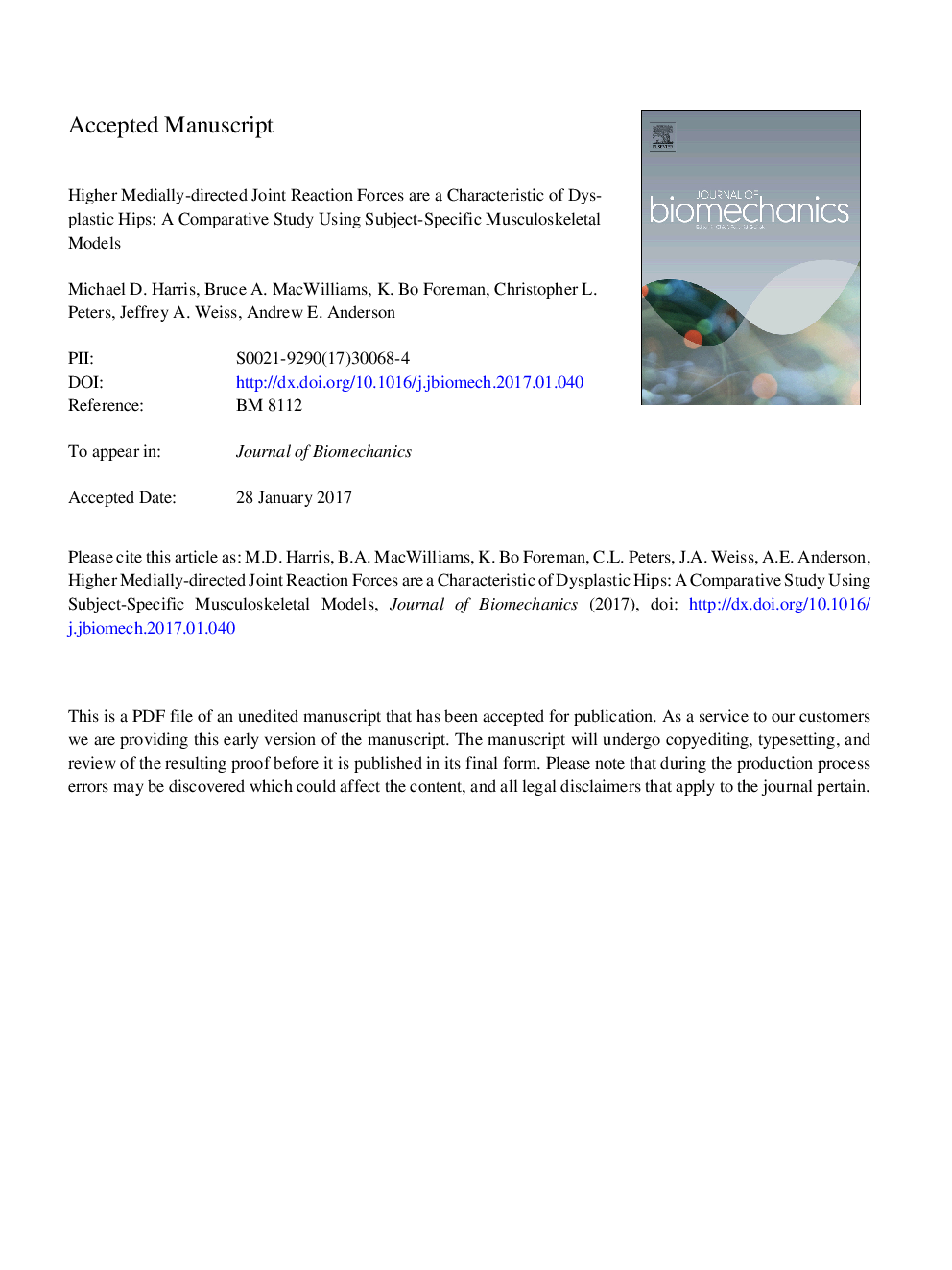| Article ID | Journal | Published Year | Pages | File Type |
|---|---|---|---|---|
| 5032172 | Journal of Biomechanics | 2017 | 36 Pages |
Abstract
Acetabular dysplasia is a known cause of hip osteoarthritis. In addition to abnormal anatomy, changes in kinematics, joint reaction forces (JRFs), and muscle forces could cause tissue damage to the cartilage and labrum, and may contribute to pain and fatigue. The objective of this study was to compare lower extremity joint angles, moments, hip JRFs and muscle forces during gait between patients with symptomatic acetabular dysplasia and healthy controls. Marker trajectories and ground reaction forces were measured in 10 dysplasia patients and 10 typically developing control subjects. A musculoskeletal model was scaled in OpenSim to each subject and subject-specific hip joint centers were determined using reconstructions from CT images. Joint kinematics and moments were calculated using inverse kinematics and inverse dynamics, respectively. Muscle forces and hip JRFs were estimated with static optimization. Inter-group differences were tested for statistical significance (p â¤Â 0.05) and large effect sizes (d â¥Â 0.8). Results demonstrated that dysplasia patients had higher medially directed JRFs. Joint angles and moments were mostly similar between the groups, but large inter-group effect sizes suggested some restriction in range of motion by patients at the hip and ankle. Higher medially-directed JRFs and inter-group differences in hip muscle forces likely stem from lateralization of the hip joint center in dysplastic patients. Joint force differences, combined with reductions in range of motion at the hip and ankle may also indicate compensatory strategies by patients with dysplasia to maintain joint stability.
Related Topics
Physical Sciences and Engineering
Engineering
Biomedical Engineering
Authors
Michael D. Harris, Bruce A. MacWilliams, K. Bo Foreman, Christopher L. Peters, Jeffrey A. Weiss, Andrew E. Anderson,
